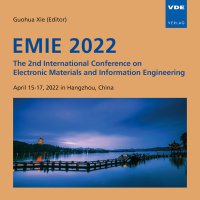GIS Partial Discharge Pattern Recognition Based on Random Forest Algorithm
Konferenz: EMIE 2022 - The 2nd International Conference on Electronic Materials and Information Engineering
15.04.2022 - 17.04.2022 in Hangzhou, China
Tagungsband: EMIE 2022
Seiten: 6Sprache: EnglischTyp: PDF
Autoren:
Yan, Zexin; Wang, Ru; He, Jiaxin; Sun, Zihan; Ma, Chi; Zhang, Boyu; Li, Jiangtao (School of Electrical Engineering, Xi'an Jiaotong University, Xi'an, China)
Inhalt:
In the power grid, GIS (gas-insulated substation) has become one of the important equipment. Correct identification of GIS partial discharge defect types can prevent the defects from continuing to cause harm to the point of failure. In this paper, insulation defects which cause the partial discharge in GIS could be divided into three categories: metal particles on the surface, free metal particles inside and metal protrusions on the surface. The waveforms of partial discharges in GIS under 60 kV were measured in these three cases by ultrasonic detection method. Each type recorded 100 groups of data. Then, the six parameters were extracted as the characteristic quantities of partial discharge patterns based on the waveforms. Finally, the data were imported into the random forest algorithm to build and train a GIS partial discharge pattern recognition model. To test the accuracy of the model, 30 sets of data were reserved as a test set to be brought into the model for recognition, and the accuracy of the GIS partial discharge pattern recognition model was found to be 96.7%. Therefore, the accuracy of GIS partial discharge defect type identification with random forest algorithm is high, and the research content in this paper is useful for reducing GIS faults.


